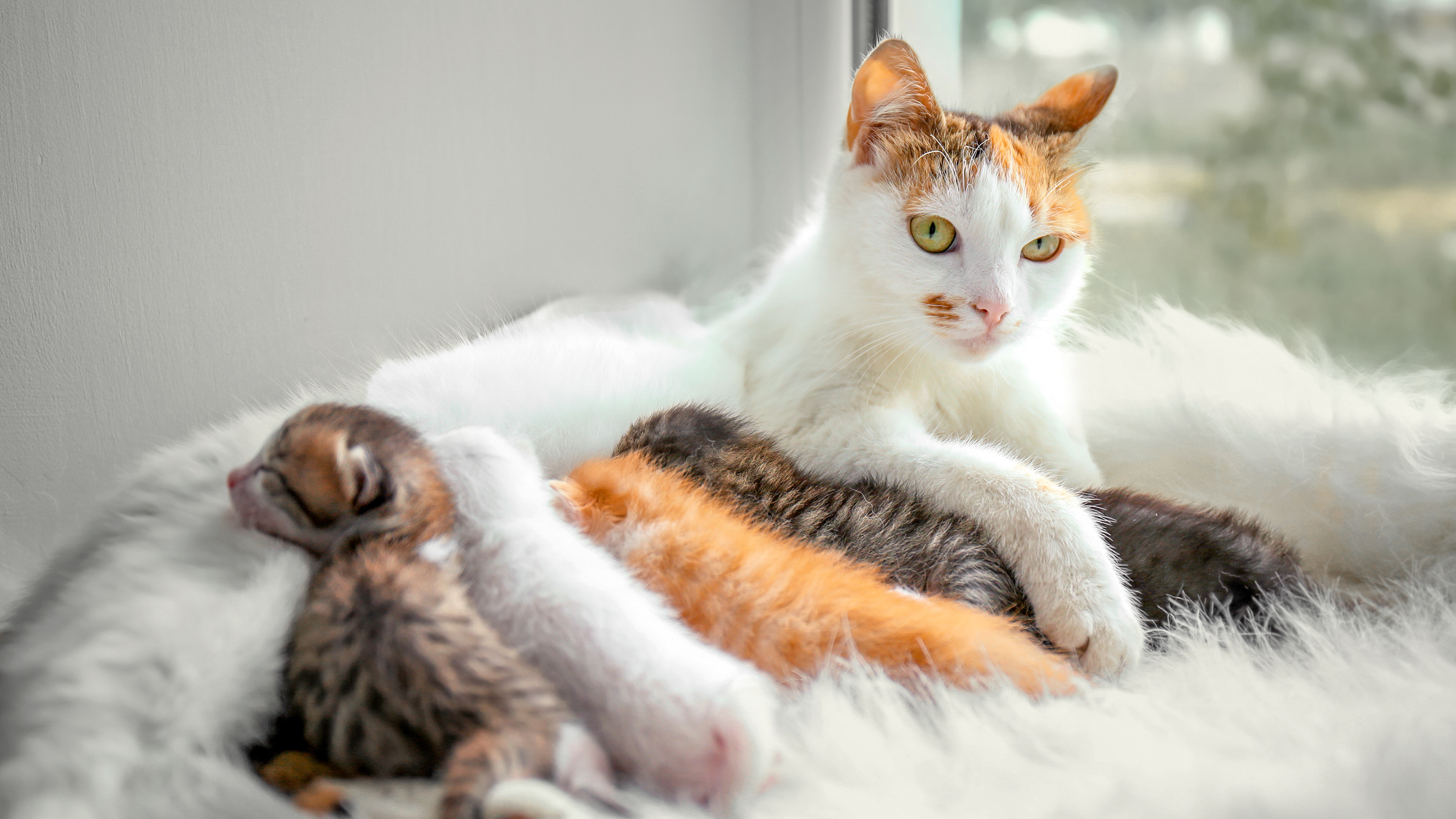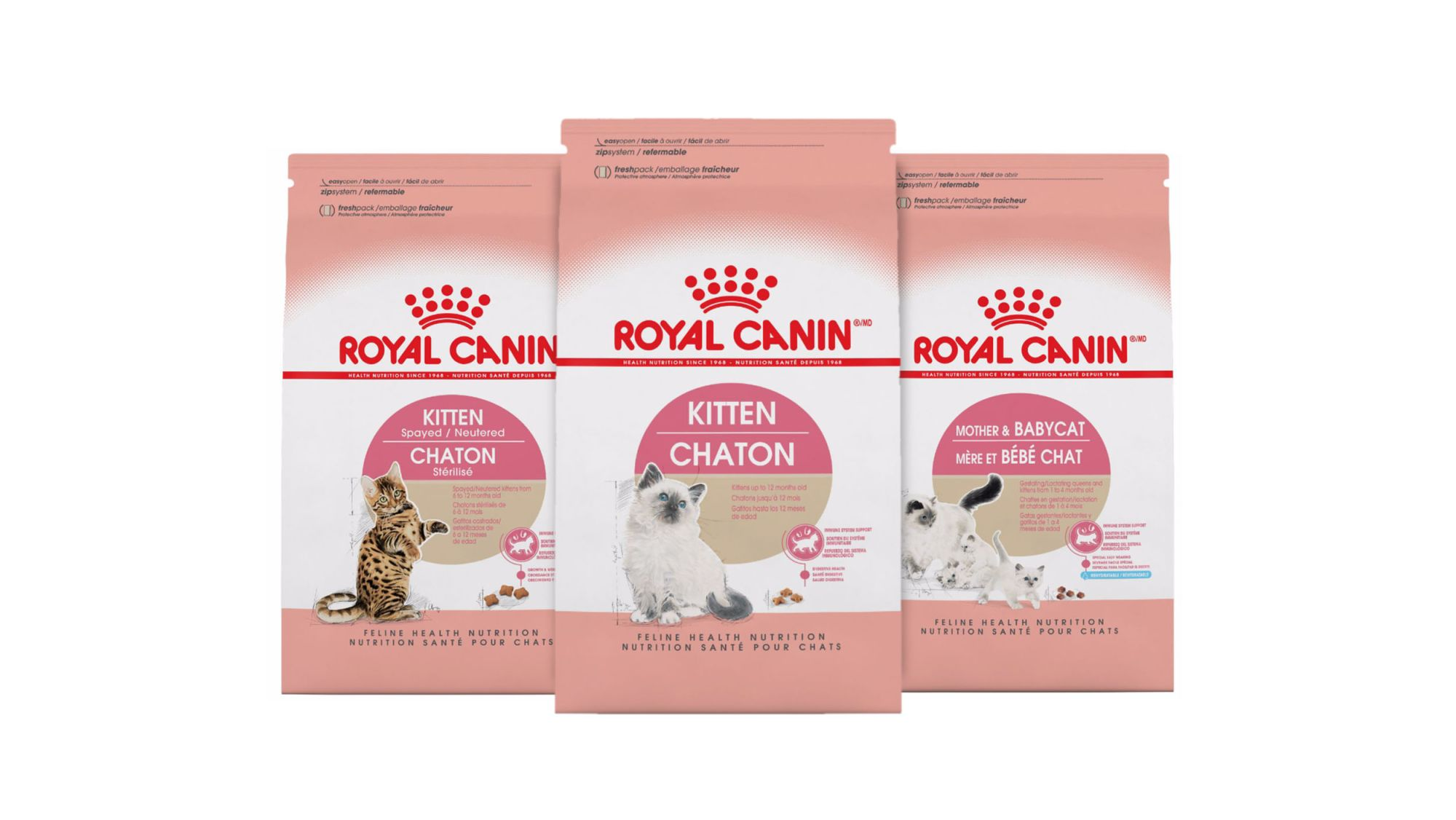Helping your pregnant cat give birth at home

With a litter of kittens on the way, it’s important you feel prepared and confident for when the day arrives. If you choose to have a home birth, then there are a number of simple but essential things you can do to make sure your cat is happy, healthy and able to give birth in a stress-free environment.
Preparing your home for your cat to give birth
Ideally, your pregnant cat should be allowed to have a room or space to herself at the end of her pregnancy. Queens (female cats) can become aggressive in the final two weeks of their gestation, so isolate her and keep her away from children. The room needs to be quite warm – around 22°C – to help her feel comfortable and reduce the risk of hypothermia, and ideally needs to have 65-70% humidity.
You should put together a nesting box where your queen can give birth. This can be a cardboard box that’s big enough for her to lie down in and with tall enough sides so the kittens won’t fall out. Line it with plastic and then newspaper, which is easily removed if it becomes soiled, and cover it with a blanket.
The nesting box should be warmer than the rest of the room to support the kittens when they are at their most fragile during the first few days of life. An infra-red lamp is a good way to do this as it doesn’t direct heat too harshly in one area, and it should be set to 30°C.
How to tell when you cat is going into labour
You might not notice the first stages of your cat’s labour, as there are no visible contractions. Instead, she will seem restless, and exhibit strange behaviour like constantly following – or avoiding – you. She’ll also be very vocal and often overgroom herself.
When she is nearly ready to give birth, she will scratch and settle into the nesting box, and start a loud purring. Once you notice a reddish discharge has been emitted, it won’t be long until the first kittens and their placentas begin to appear – normally in less than an hour.

During birth, your queen will ‘cry’ and sound distressed, which is completely normal. You can expect to see a kitten every 10 to 60 minutes, and it’s likely your cat will eat the placentas and chew through the kittens’ umbilical cords. If two hours have passed after you've spotted the discharge and there’s no sign of the newborns, get in touch with a vet who may need to assist the birth.
Cats are very good at looking after themselves during labour, so try to avoid fussing over her; checking on her every 15 minutes is perfectly fine. If she feels stressed in any way, she will interrupt her own labour and prevent delivery for hours, or even days!
The signs of a healthy newborn kitten
Once the kittens are delivered, they should immediately crawl towards their mother and start to suckle on her; keep kitten milk handy for any that don’t. If your cat doesn’t lick them after they’ve fed, you’ll need to massage them with a damp compress to aid digestion and excretion. Keep the room quiet and warm, with the door closed – 15-20% of cats who are new mothers come on heat within days of delivery and will wander off to find a mate, which can leave the kittens vulnerable.
A home birth for your pregnant cat can help her feel relaxed and stress-free, giving her litter the best start possible. If you’re unsure about whether you’ve prepared your home in the right way, make sure to speak to your vet who will be able to advise you.
Related Articles

Tailored nutrition for your kitten
Nutritional formulas that help to build your kitten's natural defences, support healthy growth, and aid in digestive system development.
Like & share this page